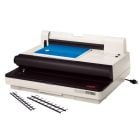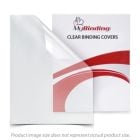Creating a Photography Portfolio
One of the major steps in becoming a professional photographer is creating your own portfolio. Here are some steps to help get you started on your impressive photography portfolio.
Gathering Your Material:
The key to a good portfolio is having good material to put in it. To that end, seek the advice of others whose opinions you trust when you are getting your photos together for your portfolio. If you have done a lot pf professional work in the past, you can begin to organize your work into categories based on the types of work you will be pursuing. If you are going to be shoeing your book to wedding planners, for instance, they will want to see the work you have done in that realm. Same goes for family portraits, actor’s head shots, etc.
No matter what type of work it is you are looking for at any given time, you should always feel free to include some of your best shots in any genre in your portfolio so that you can better show your artistic eye and photographic abilities. Don’t be shy about showing them your best work, as whoever it is that views your portfolio may well remember what they saw and recommend you to a friend at some point.
Just as you should show your diversity in styles, you should demonstrate your best work in black and white as well as in color. If you have special talents in processing via PhotoShop and/or the darkroom, don’t be afraid to display these skills as well.
The key is to have enough work in all your intended areas that you can keep your portfolio a flexible demonstration of your past work that you can change to meet what you perceive will be the needs and desires of your potential client.
Bio and Resume:
In the front of your portfolio, you should include some sort of resume and biographical information. If you have had some higher profile clients, here would be a good place to mention them. If you have a letterhead with a logo or personal high quality linen stationery, print them on that paper. Just a few lines about what you did for each client will suffice. You don’t need to include contact information for references, but you can let your potential clients know that you can supply them with references if they wish.
For your bio, you may want to include a thumbnail head shot of yourself, and explain how you got into photography and how long you’ve been working as a professional, etc.
Place your resume and bio at the beginning of your portfolio, but don’t take up too many pages. Two would be ideal.
Putting it Together:
Find a nice portfolio case or three ring binder to put your work in, along with some clear plastic sleeves to put your work in. The key is to use a binding system that is easily editable so you can change it to meet the needs of your clients.
Put your very best work in the genre in question at the front of your photography section and your best work regardless of genre at the end. These are the parts that your potential client is most likely to remember.








